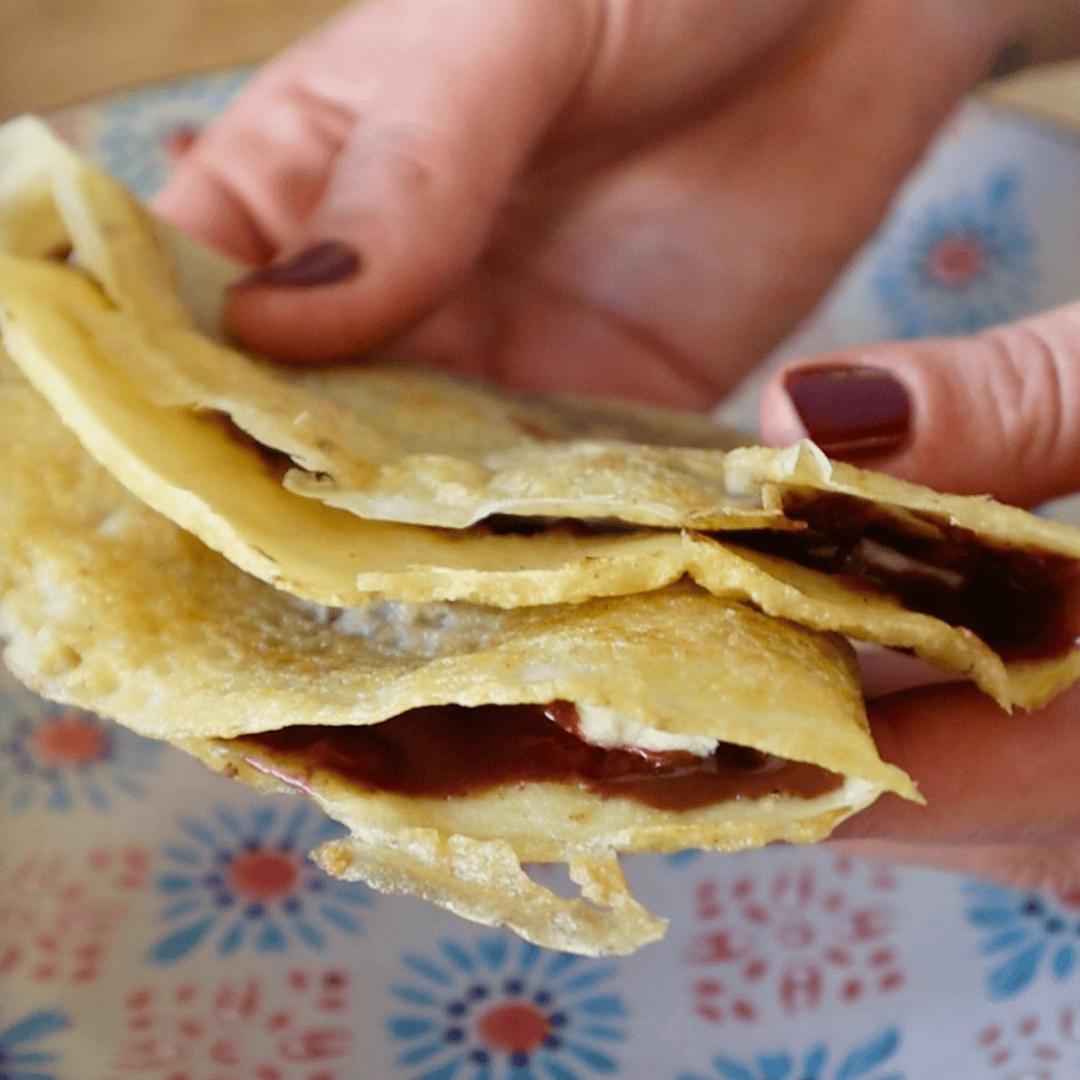Rice flour is a versatile ingredient widely used in both gluten-free and traditional cooking.
Known for its light texture and subtle flavor, rice flour is a staple in many cuisines worldwide, especially in Asian dishes like noodles, pancakes, and desserts.
It also finds a place in gluten-free baking as a popular substitute for wheat flour. Whether you’re making mochi, thickening a sauce, or baking a cake, rice flour can be a game-changer.
However, there are instances when you might not have rice flour on hand or need an alternative due to dietary restrictions or specific recipe requirements.

In this article, we’ll dive into what rice flour is and explore a wide range of substitutes divided into gluten-free and gluten-containing options based on your needs.
By the end, you’ll be equipped with practical solutions to make your recipes work seamlessly without rice flour.
What is Rice Flour?
Rice flour is a fine powder made from ground rice grains. It comes in different varieties, the most popular ones being white rice flour and brown rice flour (there is also glutinous rice flour also known as sweet rice flour but that’s more specific).
Each type has distinct characteristics that affect its use in cooking and baking:
White Rice Flour: Mild in flavor and often used in various recipes for its neutral taste.
Brown Rice Flour: Made from whole grain rice, it has a nuttier flavor and higher nutritional content due to the inclusion of the bran and germ.

Rice Flour Substitutes – Gluten-Free Alternatives
For those avoiding gluten, here are some gluten free alternatives that can be used instead of rice flour.
Of course, it depends a lot based on the use and the specific recipe, but this can give you an idea of what you can try to substitute.
Cornstarch

Cornstarch is a common pantry staple that doubles as an excellent thickening agent in soups, stews, and sauces.
Like rice flour, cornstarch is gluten-free and creates a smooth, velvety texture when used in liquid-based recipes.
While it’s not suitable for baking on its own, it can be paired with other flours in gluten-free baking to add structure and tenderness. It also works great for deep-frying and making puddings.
Ratio: Cornstarch can replace rice flour at a 1:1 ratio for thickening purposes. However, it’s important to dissolve cornstarch in cold water before adding it to hot liquids to prevent clumping. Cornstarch is particularly useful for dishes like puddings, gravies, and stir-fries, where a glossy finish and smooth texture are desired.
Arrowroot Powder

Arrowroot powder is derived from the roots of the arrowroot plant and serves primarily as a thickening agent.
It has no distinct flavor, making it ideal for sauces, puddings, and gravies where you want to maintain the original taste of the dish while achieving a smooth consistency.
Arrowroot powder creates a glossy finish when cooked and works well at lower temperatures compared to cornstarch or potato starch.
Ratio: When substituting arrowroot powder for rice flour as a thickener, use about half the amount specified in the recipe since arrowroot has stronger thickening properties.
Almond Flour

Almond flour is made from finely ground almonds and is a popular choice in gluten-free baking. It adds a rich, nutty flavor and moist texture to recipes.
Almond flour is particularly well-suited for cakes, cookies, and pancakes. It is high in protein and healthy fats, making it a nutritious option.
Ratio: When substituting almond flour for rice flour, it’s often recommended to use slightly less due to its density. It’s recommended to adjust your liquid ratios since it’s more absorbent. Additionally, incorporating eggs or an egg alternative can help bind the mixture, as almond flour lacks gluten, which provides structure in traditional baking.
Tapioca Starch/Flour

Tapioca flour, also called tapioca starch, derived from the cassava root, is known for its ability to create a chewy texture in baked goods.
It has a slightly sweet taste and it’s the perfect thickening agent for sauces, soups, gravies and pie fillings.
In gluten-free recipes, tapioca flour can be combined with other flours to improve elasticity and moisture retention.
It is particularly effective in recipes like gluten-free bread and pizza crusts. When using tapioca flour as a substitute for rice flour, it’s best to use it in combination with other gluten-free flours for optimal results.
Ratio: Use a 1:1 ratio. The texture might differ slightly, as tapioca starch makes for a more elastic and less crumbly result.
Potato Starch

Potato starch is another versatile gluten-free alternative that excels at thickening liquids without altering their flavor significantly. It’s made from crushed potatoes, where the starch is extracted
It has a neutral taste and it creates a smooth texture in sauces and soups and can also be used in baking to improve moisture retention.
It’s best added at the end of the cooking process as high heat can make it lose its thickening abilities.
Ratio: When substituting potato starch for rice flour, it’s important to note that it works best when combined with other flours, as it can create a gummy texture if used alone. Potato starch is ideal for recipes like custards or gravies where a clear, glossy finish is desired.
Quinoa Flour

Quinoa flour is made from ground quinoa seeds and offers a slightly earthy flavor along with a high protein content.
This makes it an excellent choice for health-conscious bakers looking to boost the nutritional value of their recipes.
Quinoa flour works well in pancakes, muffins, and energy bars. Due to its strong flavor, it’s often best used in combination with other flours.
Ratio: When substituting quinoa flour for rice flour, start with a smaller amount and adjust based on taste preferences and desired texture. It’s important to note that it’s denser so liquid need to be adjusted.
Oat Flour

Oat flour, made from finely ground oats, is a nutritious gluten-free alternative with a mild, slightly sweet flavor.
It’s an excellent choice for baked goods like muffins, pancakes, and cookies, offering a hearty texture and natural sweetness.
Ratio: When substituting oat flour for rice flour, use a 1:1 ratio, but keep in mind that oat flour absorbs more liquid, so you may need to adjust the wet ingredients in your recipe. Ensure the oats are certified gluten-free to avoid cross-contamination if you have a gluten intolerance. Oat flour’s fiber content makes it a filling and healthy option for various recipes.
Gluten Alternatives
If instead you’re not avoiding or can gluten, here are some alternatives to rice flour that are not gluten free.
All-Purpose Wheat Flour

All-purpose wheat flour is one of the most commonly used flours across various cuisines due to its versatility.
It contains gluten proteins that provide structure and elasticity in baked goods like bread and pastries.
When substituting all-purpose wheat flour for rice flour in recipes that require gluten development (like bread), you may need to adjust hydration levels since all-purpose flour absorbs more liquid than rice flour does.
All purpose flour is a good substitute for rice flour as a thickening agent, for frying, coating and for baking.
Ratio: Substitute rice flour with a 1:1 ratio. If you’re it as a thickening agent, make a slurry in the same way you would with cornstarch.
Whole Wheat Flour

Whole wheat flour is made from whole grains of wheat that retain their bran and germ layers, resulting in higher fiber content compared to all-purpose wheat flour.
This type of flour imparts a nuttier flavor and denser texture to baked goods such as bread and muffins.
While whole wheat can replace rice flour directly in some recipes (especially savory ones), it will yield denser results due to its higher protein content.
Adjustments may be needed regarding liquid ratios when using whole wheat instead of rice flour.
Semolina Flour

Semolina flour, made from durum wheat, is a coarser flour commonly used in pasta making. It’s also a great alternative for fried foods, providing a crunchy texture.
While it’s not suitable for delicate baked goods, semolina flour can replace rice flour in recipes like gnocchi or savory coatings. Use a 1:1 ratio for substitution
Choosing Substitutes Based on Use
Depending on the purpose of rice flour in your recipe, the best substitute may vary. Here’s a quick guide to help you choose:
For Baking
Almond Flour: Ideal for cakes, cookies, and muffins; adds moisture and a nutty flavor.
Oat Flour: Great for hearty baked goods like muffins and pancakes.
For Thickening
Tapioca Flour: Offers a glossy finish and works well in soups, sauces, and pie fillings.
Cornstarch: A versatile thickening agent for gravies, puddings, and stir-fries.
Potato Starch: Adds silkiness to soups and sauces.
For Frying
Potato Starch: Creates a light, crispy coating for fried foods.
Semolina Flour (for non-gluten-free): Provides a crunchy texture for breading.
Tapioca Flour: Ensures a light and crunchy finish.
All purpose flour
For Neutral Flavor
Tapioca Flour: Mild and versatile.
Cornstarch: Flavorless and blends well into most recipes.
All-Purpose Flour (for non-gluten)
Final Thoghts
Incorporating rice flour into your cooking and baking can open up a world of culinary possibilities, especially for those following gluten-free diets.
However, the versatility of rice flour also invites the need for alternatives, whether due to availability, dietary preferences, or specific recipe requirements.
From gluten-free options like almond flour, tapioca flour, and quinoa flour to traditional gluten-containing substitutes such as all-purpose and whole wheat flours, each alternative brings its unique flavor, texture, and nutritional benefits to the table.
Understanding the properties of these substitutes allows you to make informed choices that can enhance your dishes while maintaining the desired outcome.









